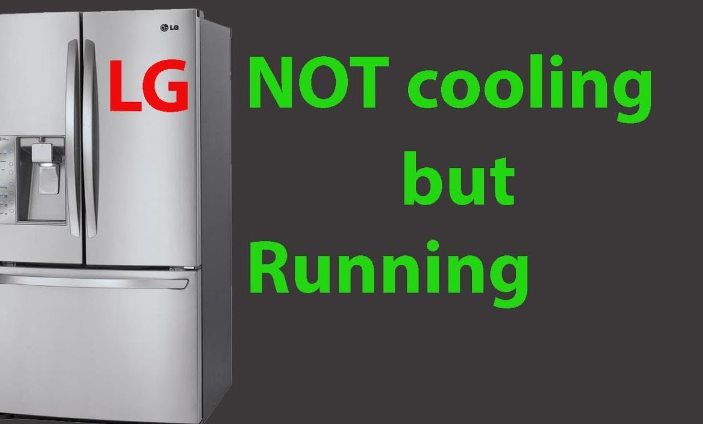LG freezer not freezing? Different ways to fix it now

Why Is The LG Freezer Not Freezing?
Before delving into specific solutions, addressing fundamental issues that might impact the freezing process is crucial. We recommend turning off the refrigerator for a day as a preliminary step. However, evacuating all food from the freezer is imperative before taking this action to prevent spoilage. This precaution ensures a more effective examination of potential problems and allows for a thorough evaluation of the refrigeration system’s functionality. Examine the sealing system and vents for cracks, preventing cold air leaks. Clear any blocked vents to enhance air circulation and maintain optimal freezer temperatures. Proper sealing and unobstructed vents are crucial for efficient cooling, ensuring a well-functioning freezer and preventing temperature fluctuations for LG freezer not freezing.
Ways to fix the LG freezer nor freezing
Malfunctioning Start Relay
The vital component of an LG freezer not freezing is its compressor, which is responsible for circulating coolant in the cooling system. Powered by the start relay, a malfunctioning relay can disrupt the entire system. This malfunction gradually impairs the compressor’s performance, leading to a complete shutdown. Consequently, the freezer’s cooling capacity diminishes and may fail to freeze, even with the door closed. In such a scenario, two possible remedies to rectify the issue are addressing the malfunctioning start relay to restore optimum compressor function, ensuring the freezer can efficiently maintain its designated temperature, and preserving frozen items effectively.
- Inspection: Inspect the start relay for damage and address any burning smell which could signal electrical issues. If present, replacing the start relay is advisable before evaluating the LG freezer’s freezing functionality. Timely attention to potential electrical problems is crucial for optimal performance and safety. Regular checks and replacements ensure the smooth operation of the freezer, maintaining its efficiency and preventing further damage.
- Using A Multimeter: If there’s no burnt smell, troubleshoot with a multimeter. Verify the start relay’s functionality and power continuity. A faulty relay disrupts electricity flow, detectable with the multimeter. If there’s no electrical activity, replace the start relay. This ensures seamless function and prevents issues.
Coils covered in grime.
Refrigerant, responsible for absorbing heat in the fridge’s cooling system, encounters the condenser coils. These coils impede its path, compelling the heat-laden refrigerant to pass over them. In this process, the refrigerant releases its accumulated heat to the coils, facilitating the cooling cycle essential for the refrigerator’s proper functioning.
When you touch the condenser coils, their elevated temperature becomes apparent—they’re pivotal in expelling heat from the freezer into the surrounding air. Working in tandem, the condenser fan motor facilitates air movement past these coils. However, a dirty condenser coil or a malfunctioning fan motor can impede the efficient transfer of heat. Over time, dust accumulation on the coils slows the heat transfer process, resulting in inadequate cooling for the LG freezer not freezing. Regular maintenance ensures these components function optimally, preserving the freezer’s cooling efficiency and overall performance. This two-step process helps ensure thorough cleaning and maintenance, keeping the condenser coils free from impediments and promoting efficient heat transfer for proper freezer functioning. After thoroughly cleaning, assess the freezer’s effectiveness to ensure it is cooling properly.
Thermostat for controlling temperature.

To troubleshoot freezing issues in your LG freezer not freezing, start by inspecting the thermostat or thermistor, responsible for monitoring internal temperature. This component plays a crucial role in regulating freezer conditions. By distinguishing between the two names, thermostat and thermistor, you can ensure clarity in identifying and addressing potential problems. Familiarize yourself with the manual to effectively manage and troubleshoot any temperature-related concerns in your LG freezer not freezing.
When the temperature control thermostat functions correctly, the temperature control board can accurately determine when to initiate or cease the cooling process. However, if the thermostat malfunctions, it may fail to accurately gauge the temperature, leading the refrigerator to inaccurately believe it has reached freezing temperatures when it hasn’t. Unfortunately, the temperature control thermostat cannot be fixed and requires replacement. Before proceeding, ensure the proper functioning of the temperature control sensor by using a multimeter. If the multimeter indicates no electrical continuity, replacing the thermostat is necessary. Afterwards, assess the freezer temperature to confirm its proper operation.
Chilled evaporator coils.
The LG freezer not freezing incorporates a dual-evaporator system within its cooling mechanism, strategically positioned in the freezer’s cooler section. This design efficiently reduces air temperature, safeguarding the freshness of stored food. However, the accumulation of ice or frost on the freezer walls and evaporator coils can obstruct cold airflow, increasing temperatures and compromising freezing effectiveness. To counteract this, LG freezers integrate an automatic defrost cycle, set to initiate once or twice daily. This thoughtful feature facilitates the controlled melting and removal of frost, averting potential operational issues and ensuring consistent performance. By proactively addressing frost buildup, LG freezer not freezing maintain optimal conditions for food preservation, offering a reliable and convenient solution for households.
If you discover ice on the evaporator coils, it indicates a malfunction in the defrost cycle. Resolve this problem by turning off the freezer and manually defrosting it. After removing all melted frost and ice, troubleshoot the defrost system to ensure proper functioning. If unable to do so independently, contact LG customer care for professional assistance, as they promptly dispatch experts to address this issue.
Faulty evaporator fan motor
The evaporator coils don’t operate independently; they rely on the assistance of an evaporator fan motor. This motor facilitates cooling and ensures the even distribution of cool air within the freezer. Over time, prolonged use of an LG refrigerator may lead to the evaporator fan motor malfunctioning due to ageing, wear and tear, or issues like power surges or short circuits damaging the system.
If your motor encounters issues, opting for a new replacement is more pragmatic and cost-effective than attempting repairs. Repairing the motor may not be a practical solution. Invest in a new, reliable motor that ensures sustained functionality for the next few years, providing a more dependable and efficient solution to address potential issues and enhance overall performance.
FAQs
Can a power outage cause the cooling system to malfunction?
Unexpected power surges during an outage can result in a burnt fuse, potentially damaging the freezer or entire refrigerator. If you detect a burning smell, you should seek professional repair assistance. You can verify the wall socket to ensure the fridge receives the required voltage. If the power outlet is okay, inspect the power cord for any signs of burning; if damaged, it needs replacement.
Another troubleshooting step is to unplug the refrigerator for approximately 30 seconds. Turn off the circuit breaker and reset the freezer by using the freezer door switch to restore the cooling system.
How can I adjust the freezer temperature?
Resetting the freezer temperature is a straightforward process. Begin by unlocking the control panel with the designated lock button. Once unlocked, use the freezer button to adjust the temperature to your desired setting. Pressing the button multiple times to achieve the desired level is crucial. After completing the temperature adjustment, securely close the freezer door to prevent food spoilage.. Neglecting this can lead to food items inside the freezer deteriorating. Stay mindful of this simple yet crucial routine for optimal freezer performance.
What steps should be taken if the freezer is cooling but not freezing food?
The issue may lie with the condenser coils if you observe the freezer cooling without effectively freezing food. Responsible for extracting heat from the LG freezer not freezing, these coils disperse it into the surrounding air. A malfunction in these coils can hinder proper freezing. Ensure the proper function of the freezer by thoroughly cleaning dirty coils. After cleaning, turn on the LG refrigerator and verify the display board settings for a cold temperature. Adjust the setting lower if necessary to optimize freezer performance.
Is it possible to defrost an LG freezer without turning it off?
You can defrost your plugged-in LG freezer not freezing by introducing a large container of boiling water into the compartment. Seal the door and allow the hot water to melt the frost buildup. After the water cools, repeat the process with additional hot water, gradually eliminating the frost. This method enhances the freezer’s cooling efficiency. Moreover, it facilitates the smooth movement of the evaporator fan blades, ensuring proper cold air circulation. Once the frost is entirely melted, your freezer will function more effectively, maintaining optimal temperatures and preserving your frozen items with improved airflow and cooling mechanisms.
Final Words
After resolving the problem, try resetting the LG freezer not freezing by holding down the Ice Plus and Refrigerator buttons on the door trim for five seconds. Listen for a confirmation sound from the control panel. Additionally, periodic cleaning of the entire refrigerator is recommended to ensure proper airflow. Manual freezer defrosting and a vacuum cleaner on the coils can help maintain efficient heat dissipation. Don’t forget to inspect and clean the evaporator fan, condenser fan, and air vents. This routine maintenance should keep all components in good working order. If issues persist, consider reaching out to customer support for assistance.





